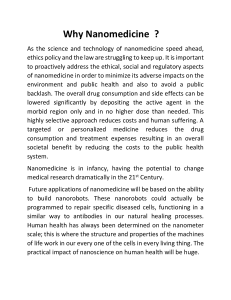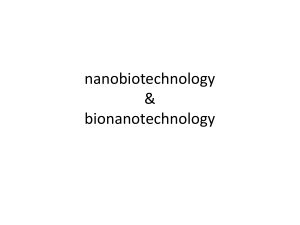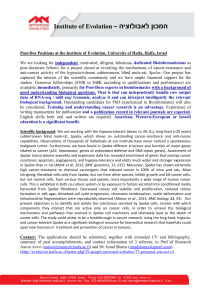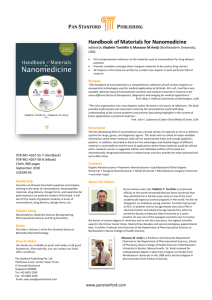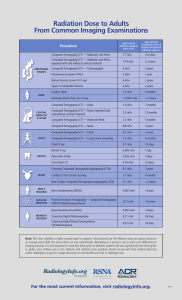PPTX presentation
advertisement
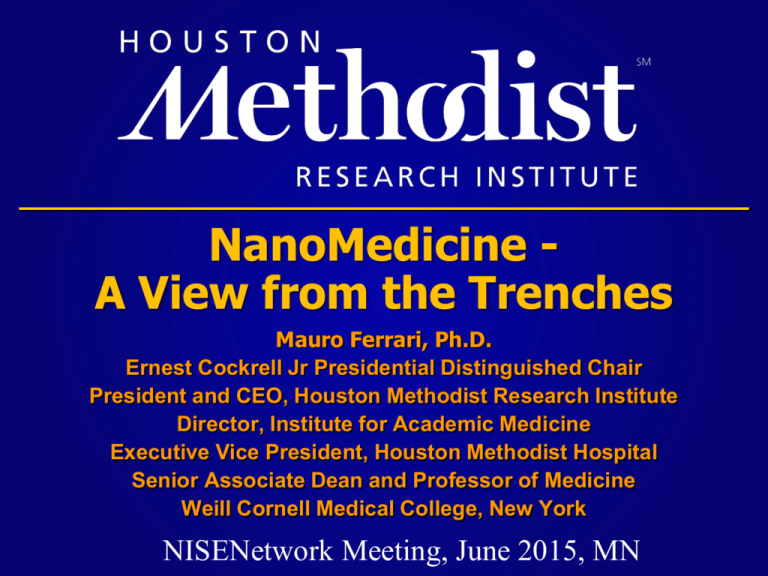
NanoMedicine A View from the Trenches Mauro Ferrari, Ph.D. Ernest Cockrell Jr Presidential Distinguished Chair President and CEO, Houston Methodist Research Institute Director, Institute for Academic Medicine Executive Vice President, Houston Methodist Hospital Senior Associate Dean and Professor of Medicine Weill Cornell Medical College, New York NISENetwork Meeting, June 2015, MN Frontier of Nanomedicine and Nanotechnology: Integrating “nanos” into “smart micros” This is how biology obtains truly superior “emerging properties” Biological cells are “smart microbags” that integrate the functions of nanoscale components (proteins, nucleic acids…) We are using this design to try to control the drug concentration in a patient’s body http://www.microscopyu.com/galleries/dicphasecontrast/images/cheekcellspc.jpg Background: Why is this needed? Most cancer deaths and morbidity are caused by metastases (lungs, liver, brain, bones) Cure rates for metastatic cancer have essentially not improved – remain about 0 though survival has increased somewhat We have very effective drugs, we just can’t get them to go preferentially to the cancer, and that is why they cause adverse side effects http://en.wikipedia.org/wiki/Esophageal_cancer Solution strategies Biological targeting of drugs and their carriers by molecular recognition Developing drug carriers (nanoparticles) that can cross the biological barriers that protect the cancers Combinations of the above Additional problem: targeted drugs and nanoparticles have greater difficulty crossing biological barriers http://www.nature.com/nnano/journal/v7/n8/fig_tab/nnano.2012.132_F1.html Current Nanomedicines First Generation: Passive targeting, in clinic (10% of mkt) Liposomes Abraxane Colloids Iron Oxide Second Generation: Biomolecular targeting, in pipeline Third Generation: Higher functions, combinatorial nanotech, sequential actions, biobarrier focus Dendrimers Nanoshells Nanocells Nanoshuttles MultiStage Systems Cancer Biobarriers Endothelial barriers Tumor-Associated Osmotic Pressure And many others! Nano-in-Micro Multi-Stage Vectors Multi-Stage Vectors Design The Debut of MultiStage (Nature Nanotech 2008) Back Side Front Side Cross Section 200 1 µm 1 1 µm Pores 20 nm m Nucleation Layer 20 nm 200 nmnm Cross Section 20 nm Two examples of MSV An MSV “cloaked” by a biological cell membrane for increased biological barrier penetration (with Ennio Tasciotti) MSV-pDox: A nanoparticle generator for the therapy of otherwise incurable lungs metastases from breast cancer (with Haifa Shen) “Leukolike” MSVs (Nature Nano January 2013) • Increased circulation time • Prevention of RES uptake • Decreased immune response • Prevention of NP release • Accumulation at tumor site Leukocyte Leukolike MSV pDox Treatment - cGMP Metastatic MDA-MB-231tumor (Haifa Shen) Survival rates Control 120 days 200 days ~10% 0% pSi/pDox 100% ~60% Multidisciplinary !!!!! Thanks! mferrari@tmhs.org



